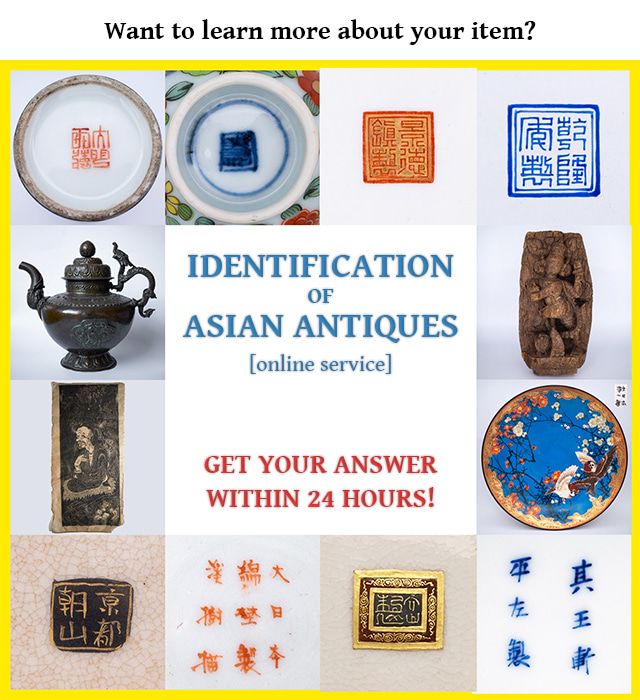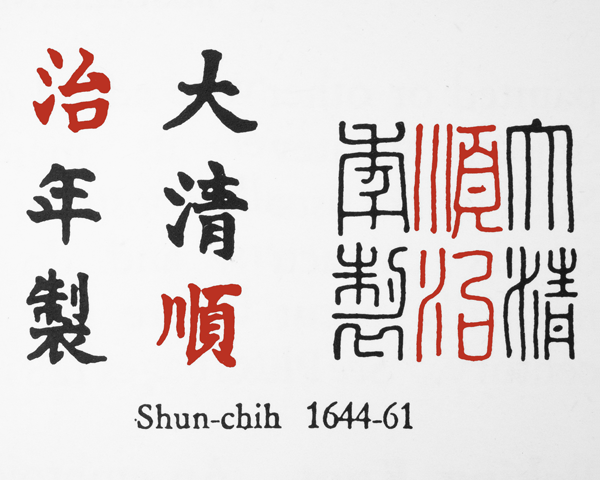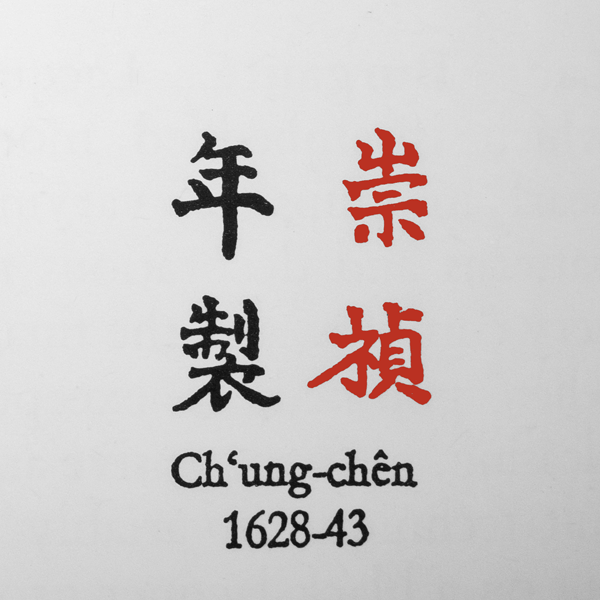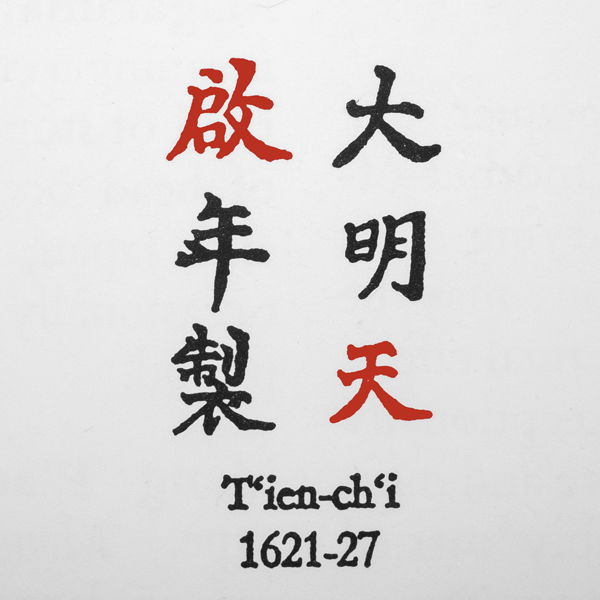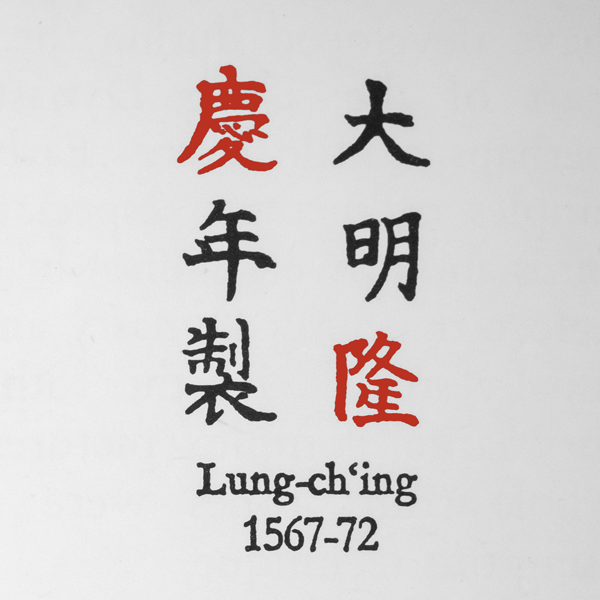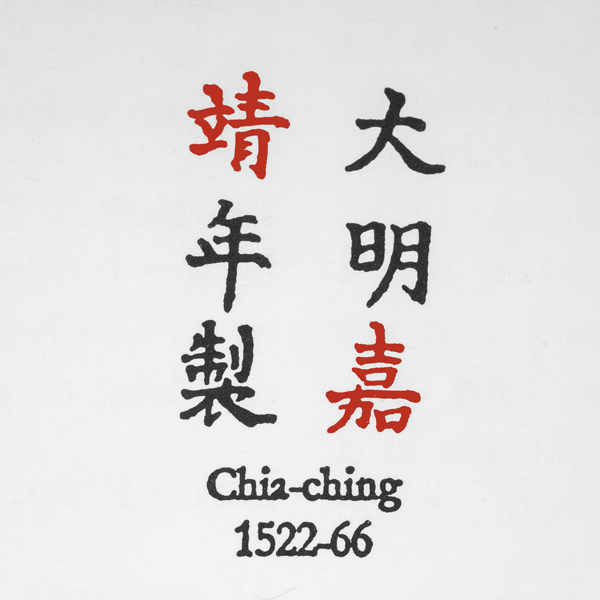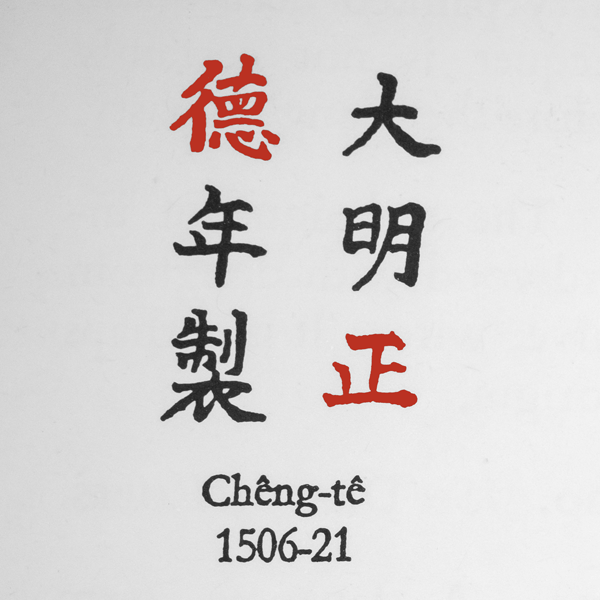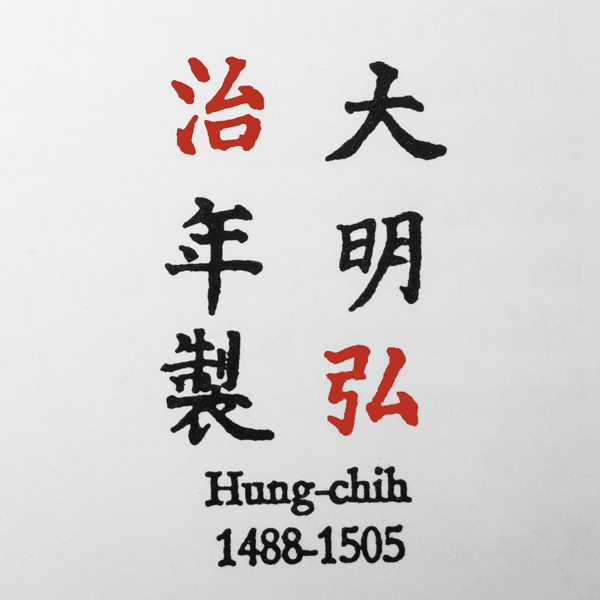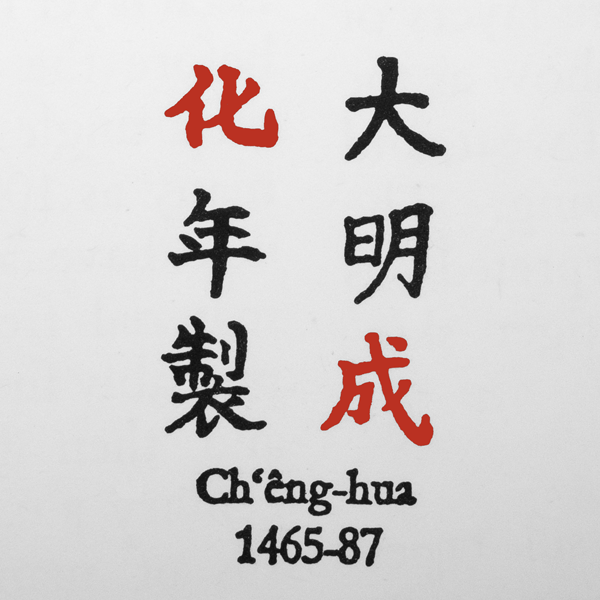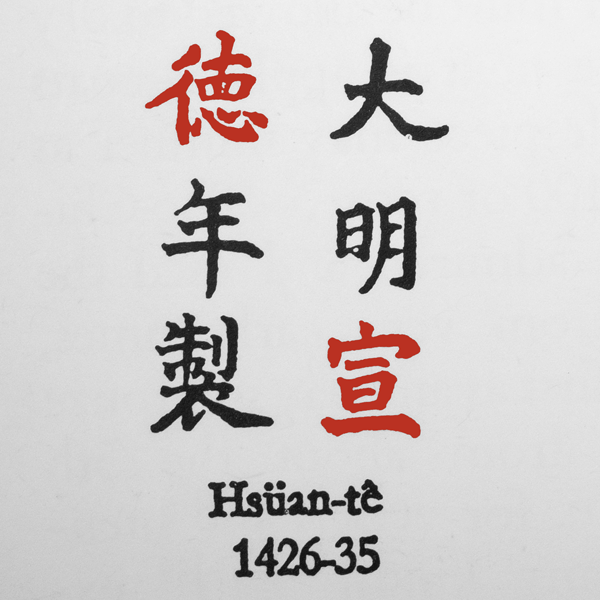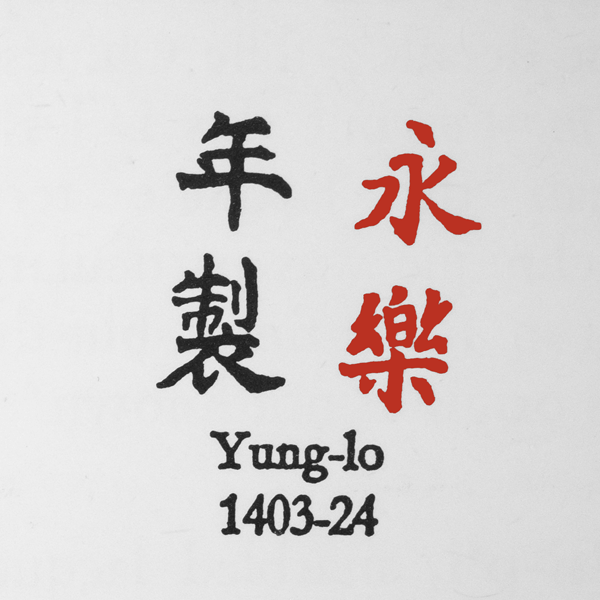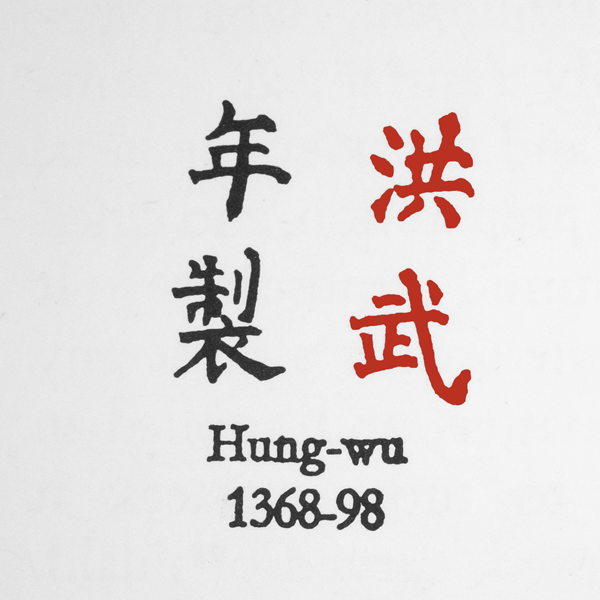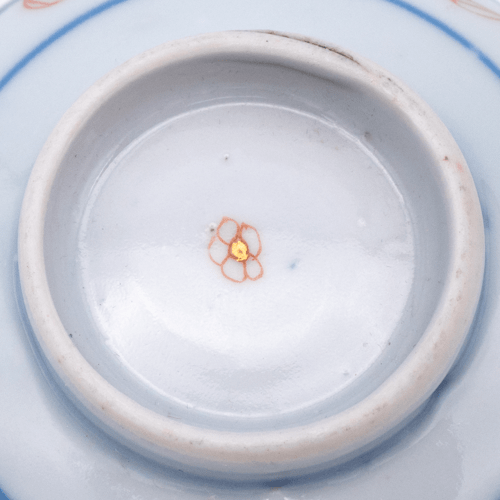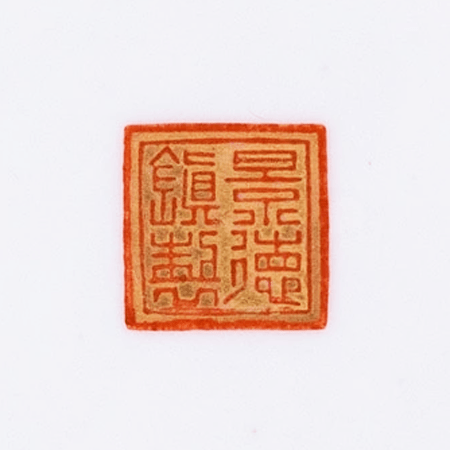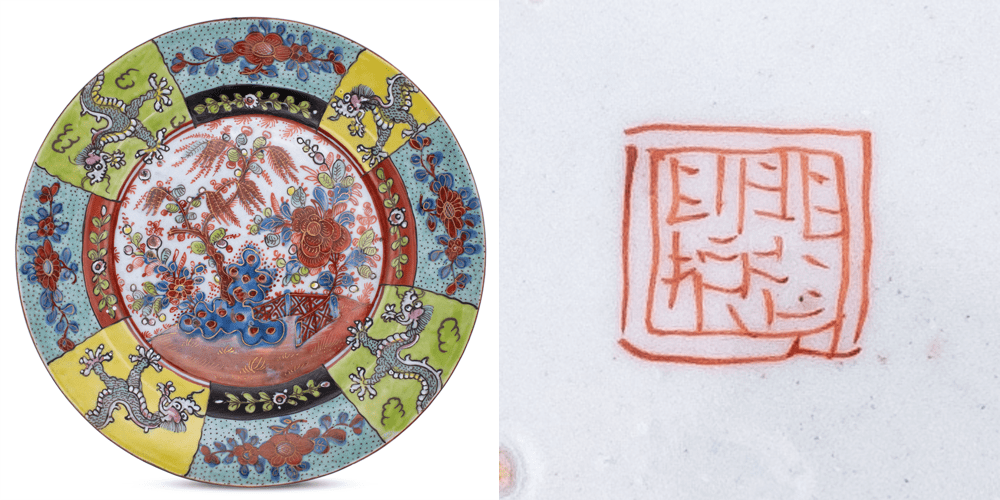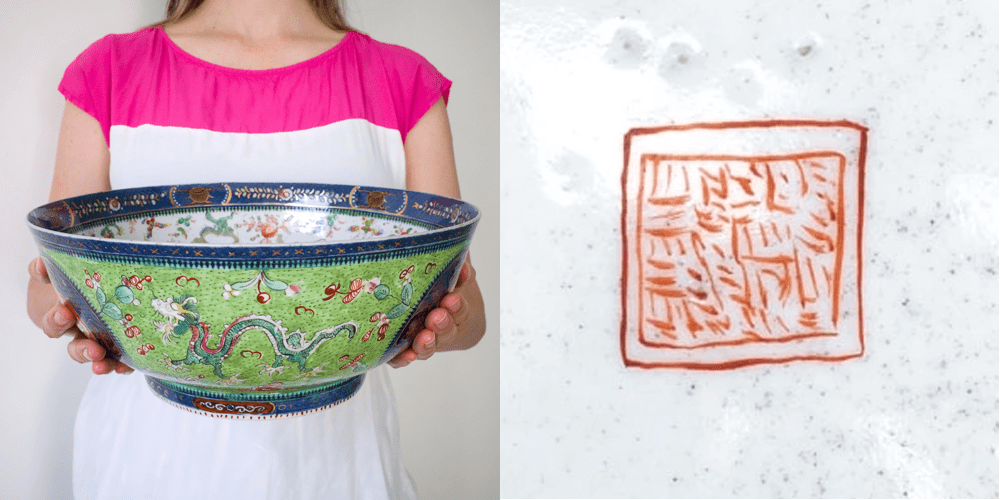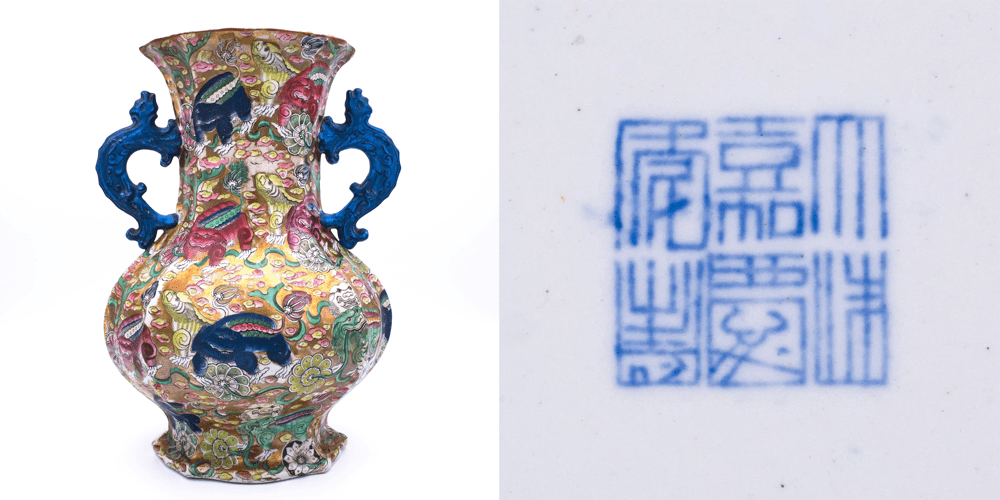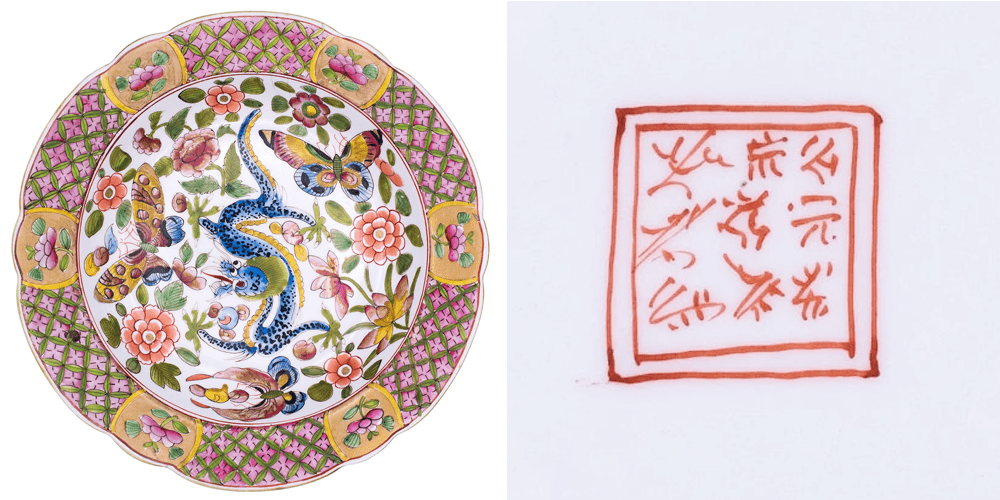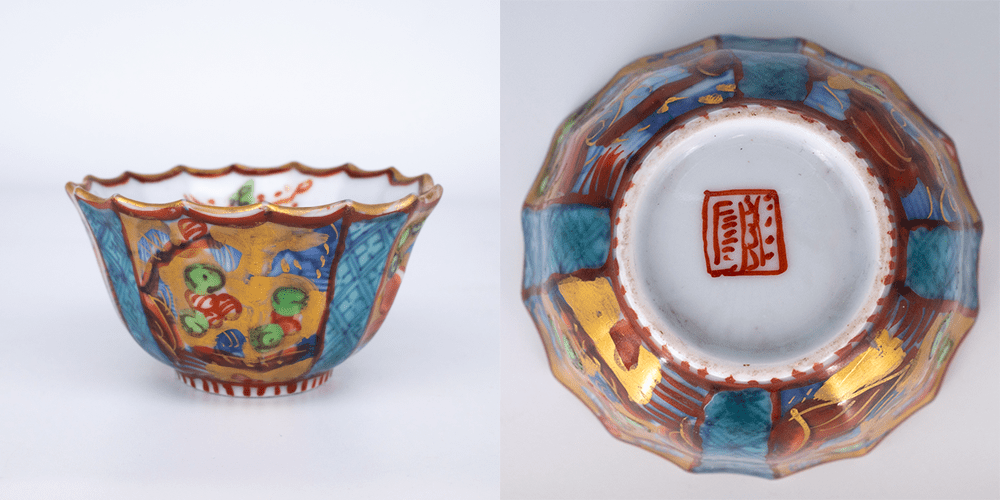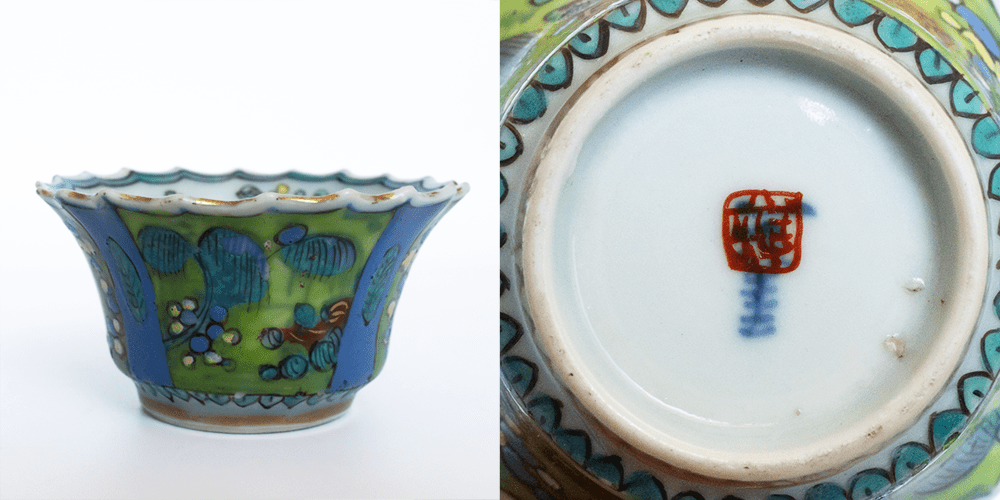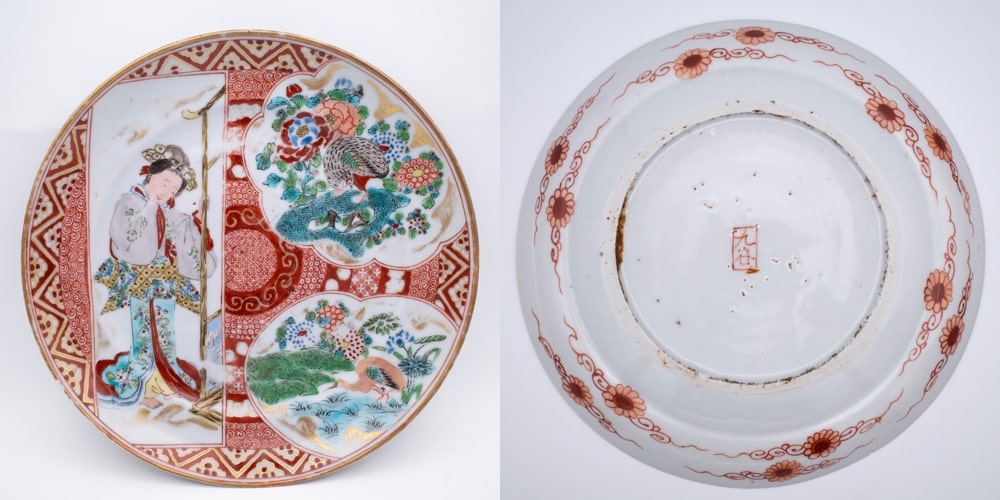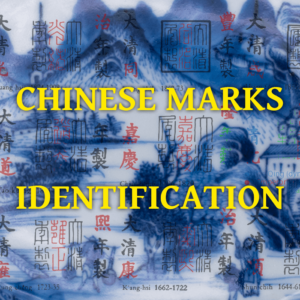
本页列出了中国瓷器年号和清明两代皇帝的印章。 每个皇帝的名字都以红色突出显示。 下面的指南解释了如何阅读中文标记以及皇帝名字周围符号的含义。 其他古代和现代中国瓷器标记,以及各种伪中国标记可以在本页底部找到。
Last update: February 2025
中国年号分栏阅读,从右到左,从上到下。 左边的标记是繁体字 楷书 脚本,而右边的标记是用程式化的 专书 篆书。 前两个字符标识朝代——在本例中为“大清”大清或大清朝(蓝色)。 接下来的两个字符(红色)是皇帝的名字——这里是乾隆乾隆。 最后两个字'年制'年制(绿色)简单的意思是制造(在位期间)。 因此,我们可以将这个年号读作 大清乾隆年间制造.
每个六字年号也可以写成四字形式,只需省略前两个字——见下面的嘉庆标记,简称为“嘉庆年制”嘉庆年制—— 嘉庆年间制.
瓷器上的中国年号和印章通常用釉下蓝色手写或用铁红色颜料在釉面上书写。 它们有时也可以被切割或压印/雕刻成浮雕和上釉。 19 世纪后期和 20 世纪的标记有时使用红色或蓝色的橡皮图章印刷。
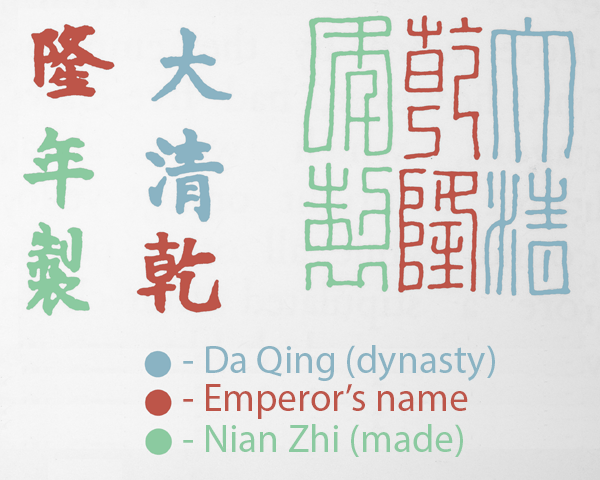
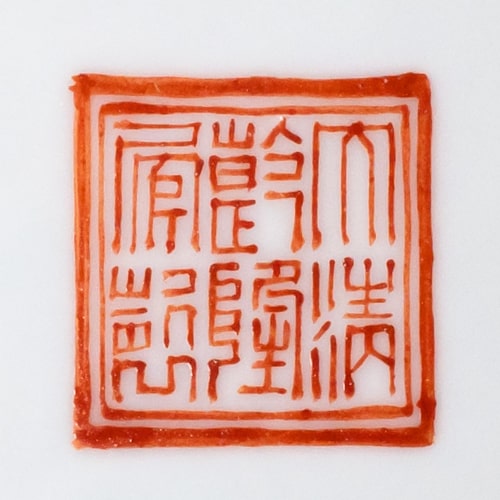
Six-character Qianlong seal mark is one of the most commonly copied marks on later Chinese porcelain. Later versions are sometimes easy to spot as shapes of the individual characters are often very different to those used during the Qianlong period itslef. Compare this mid-20th century version of the mark to the one illustrated above.
Marks on Chinese porcelain are often ‘apocryphal’ – later pieces are commonly marked with reign marks of earlier Emperors, either as a sign of respect or to mislead the buyer.
Use our identification service to find out whether your item is a genuine antique or just a reproduction.

清朝 (1644-1912)
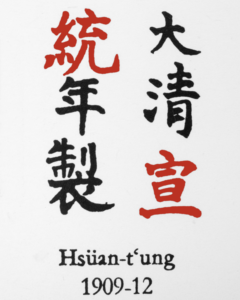
查看 eBay 上的示例 →
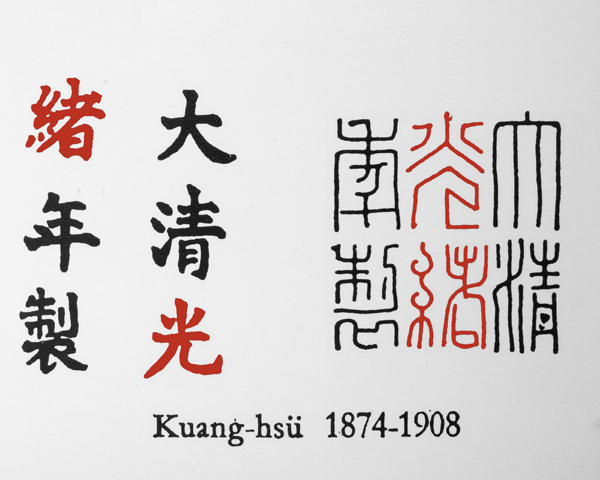
查看 eBay 上的示例 →
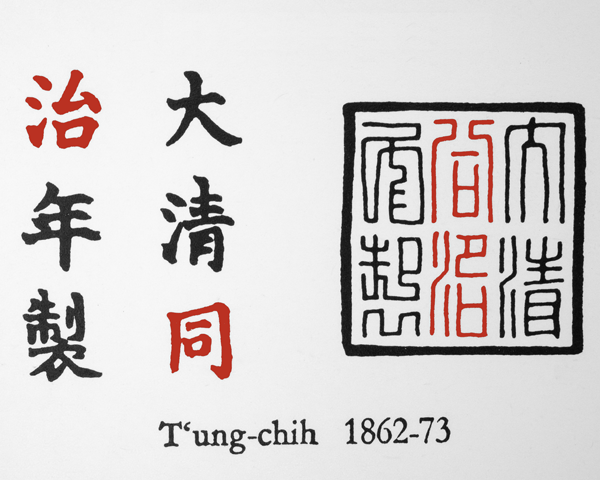
查看 eBay 上的示例 →
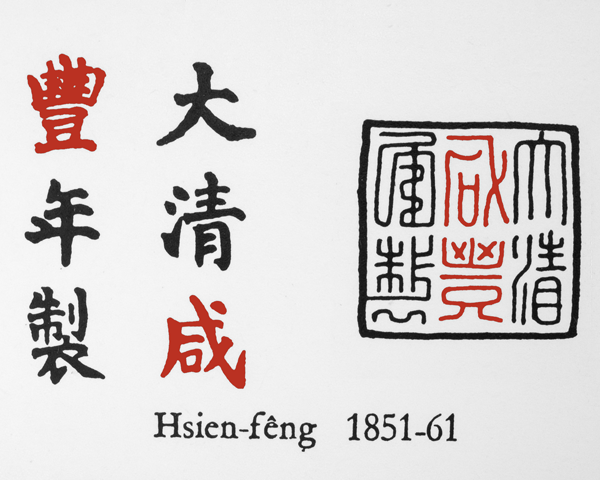
查看 eBay 上的示例 →
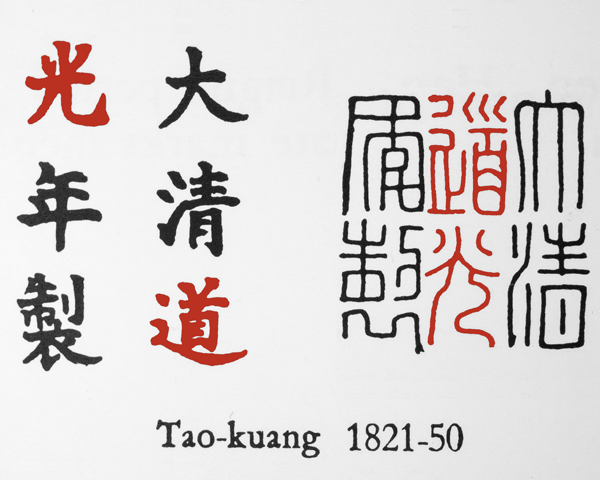
查看 eBay 上的示例 →
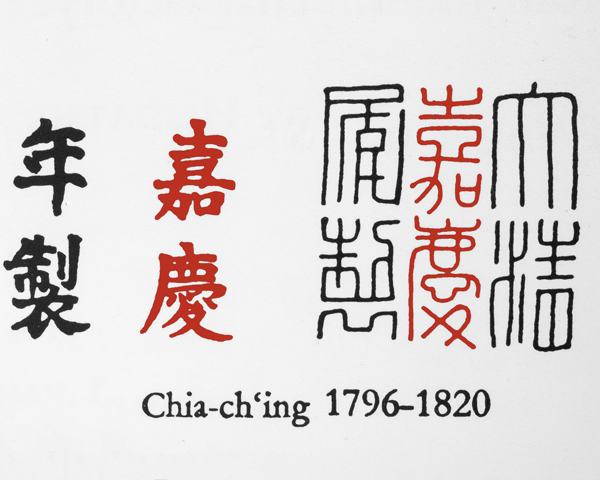
参见 eXeBay 上的充足 →
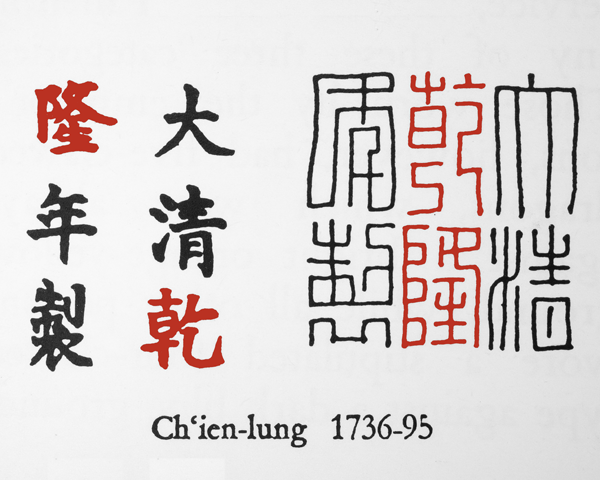
查看 eBay 上的示例 →
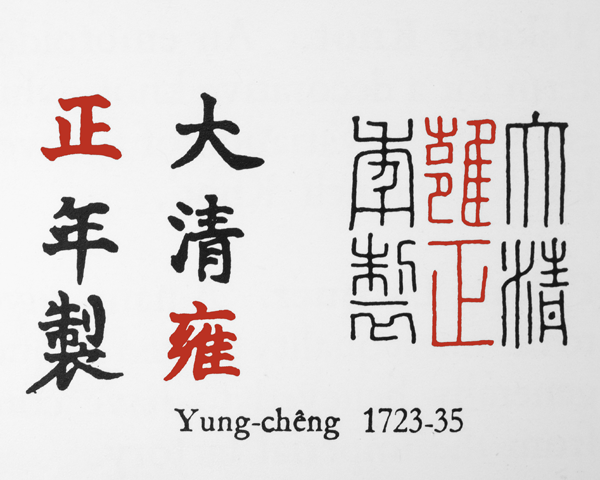
查看 eBay 上的示例 →
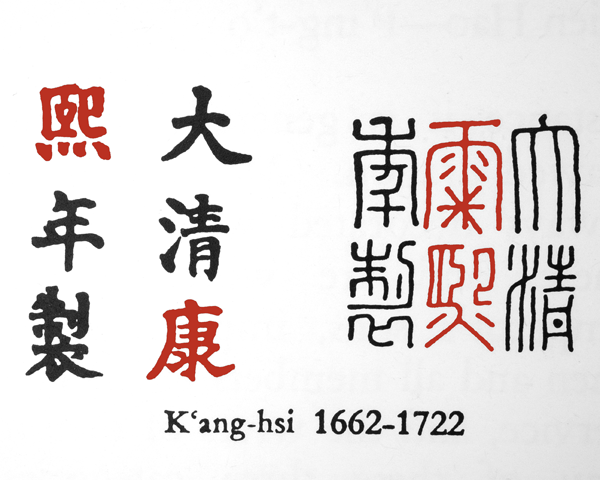
查看 eBay 上的示例 →
中国皇帝名单 – 清朝 (1644-1912)
宣统 (1908-1912)
光绪 (1875-1908)
同治 (1861-1875)
咸丰 (1850-1861)
道光 (1820-1850)
嘉庆 (1796-1820)
乾隆 (1735-1796)
雍正 (1722-1735)
康熙 (1661-1722)
顺治 (1644-1661)
明朝 (1368-1644)
中国皇帝名单 – 明朝 (1368-1644)
崇祯 (1627-1644)
天七 (1620-1627)
太昌 (1620)
万里 (1572-1620)
隆庆 (1566-1572)
嘉靖 (1521-1566)
正德 (1505-1521)
宏志 (1487-1505)
成化 (1464-1487)
明英宗 (1457-1464)
景泰 (1449-1457)
明英宗 (1435-1449)
宣德 (1425-1435)
洪熙 (1424-1425)
永乐 (1402-1424)
建文 (1398-1402)
洪武 (1368-1398)
中国瓷器上发现的其他标记
中国古代和现代瓷器上的标记绝不仅限于上图所示的印章和年号。 在古董陶瓷上可以找到许多不同类型的中国标记、符号和象形文字——釉下彩和釉上彩。 现代中国瓷器还具有各种各样的工厂标记和签名,这些标记和签名通常用红色或蓝色珐琅压印在釉上。 以下只是这些标记的一小部分。 我们将定期更新此列表。
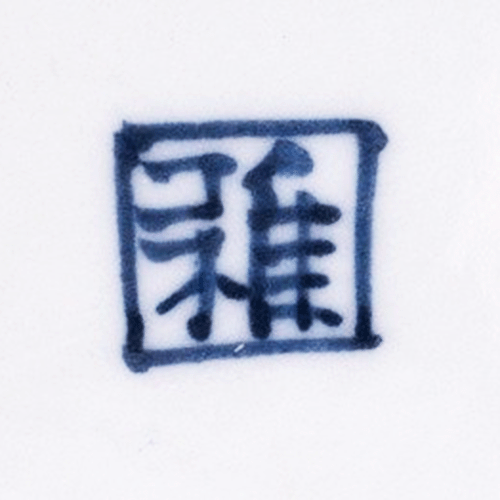
Underglaze blue square mark with character 雅 ‘Ya’ (elegance) inside. Found on a late Ming, c. Chongzhen period (1627-1644), rectangular ko-sometsuke dish.
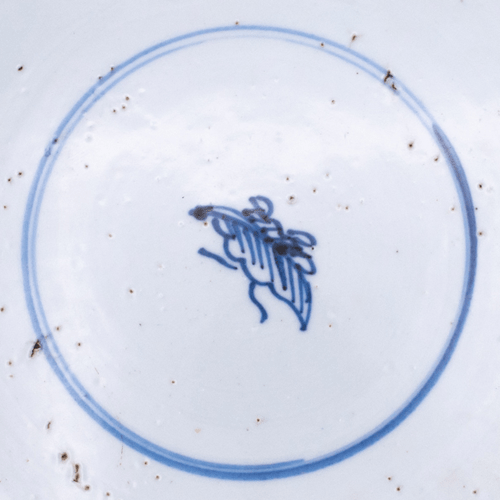
双圈内釉下蓝色艾叶符号,为十七世纪康熙时期瓷器的典型特征。 由于政治局势,这一时期统治标记的使用受到限制。 此标记来自于一件大型五彩瓷器充电器。 这一时期使用的其他符号包括对珍贵的佛教符号(Astamangala)、兔子、灵芝、香炉等的单独描绘。
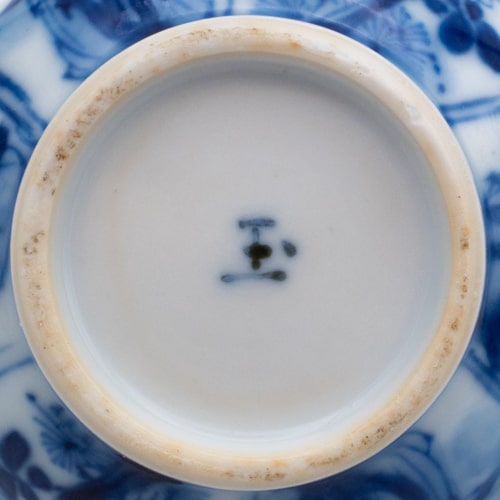
Typical underglaze blue character mark 玉 ‘Yu’ (jade) found on the base of a Kangxi period (1661-1722) miniature teapot decorated in popular ‘Long Eliza’ (Lange Lijsen) pattern.
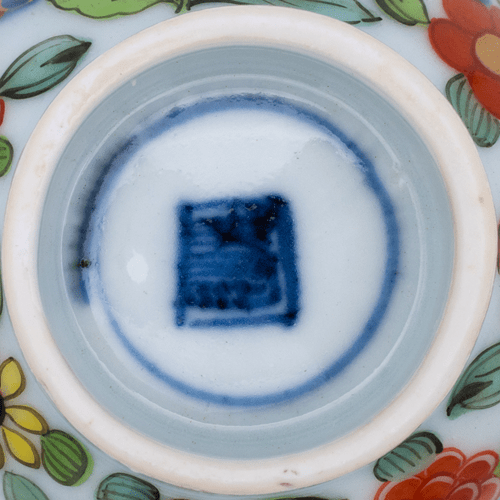
釉下蓝色长方形中国商号,内有单圈或双圈——常见于 18 世纪和 19 世纪的瓷器上。 这些要么是正方形内的几何图案,要么是更常见的风格化签名,这些签名通常无法破译。 此例出自中国青花茶碗,后来有欧洲釉上彩装饰。
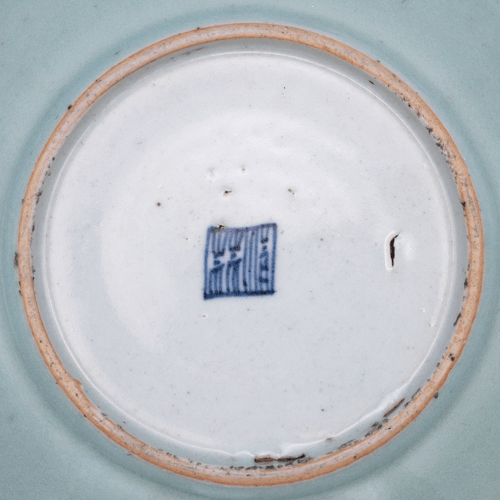
Square underglaze blue shop mark on a 19th century celadon-ground Canton famille rose decorated dish.
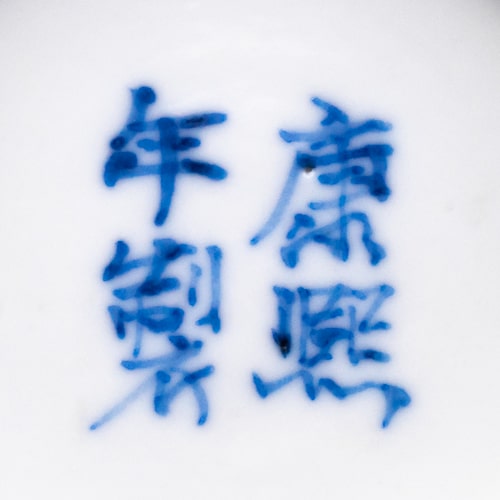
Underglaze blue four-character Kangxi (1661-1722) reign mark 康熙年製, often found on Guangxu period (1875-1908) blue and white ‘Kangxi revival’ porcelain. Four-character form of the reign mark was rarely used during the Kangxi period itself.
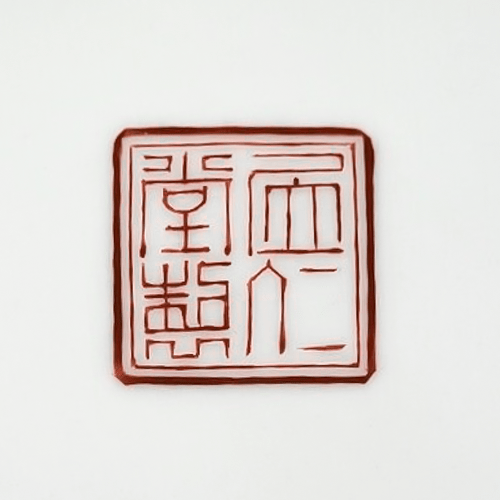
Jurentang – 居仁堂製 ‘Jurentang Zhi ‘ – this square iron red mark translates as ‘Hall of Dwelling in Benevolence’ which was the abode of the first president of Chinese Republic, Yuan Shikai (1859-1916). This early Republic period mark can sometimes also be found on later 20th century PRoC porcelain examples (usually not as neat as period examples and slightly irregular).
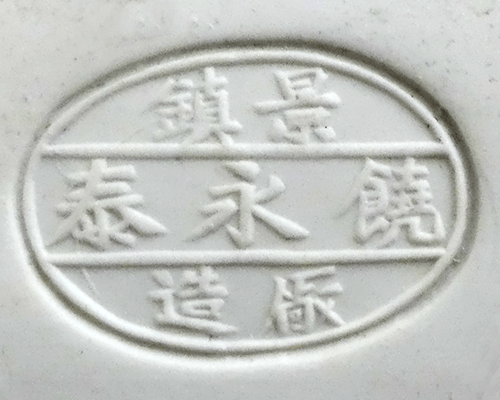
Rao Yongtai – impressed oval mark that reads 景镇 饶永泰 廠造 – Jingzhen (short for Jingdezhen), Rao Yongtai, factory made. Found on Republic Period porcelain (1912-1949).
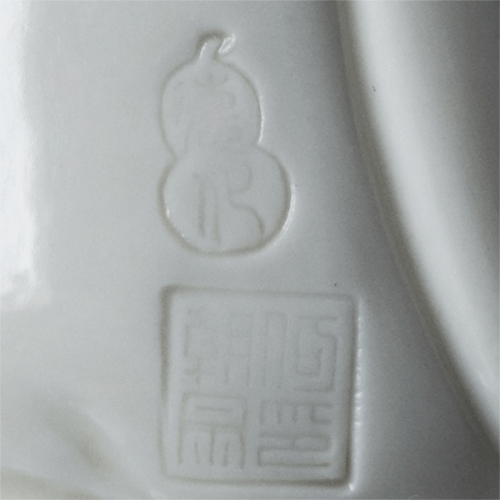
He Chaozong – impressed double gourd mark and a rectangular seal ‘何朝宗印’ of this 17th century Master potter, often found on later 20th century Dehua (Blanc de Chine) figurines of Guanyin and other spiritual figures.
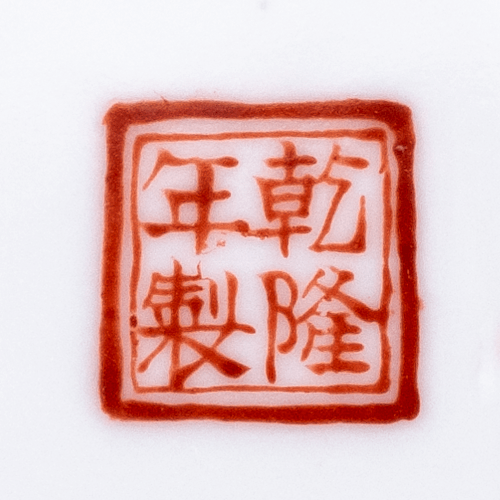
Hand-painted iron red rectangular four-character Qianlong mark 乾隆年製 ‘Qianlong Nian Zhi’ found on famille rose porcelain dating to the early PRoC period, mid-20th century.
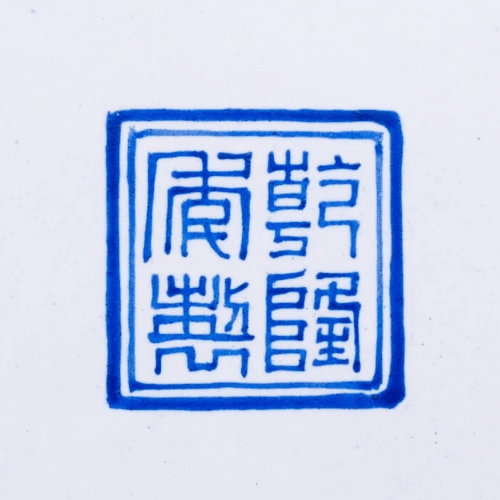
Blue rectangular four-character Qianlong seal mark 乾隆年製 ‘Qianlong Nian Zhi’ (apocryphal). Found on a 20th century Chinese Canton enamel (enamel on copper) bitong brush pot.
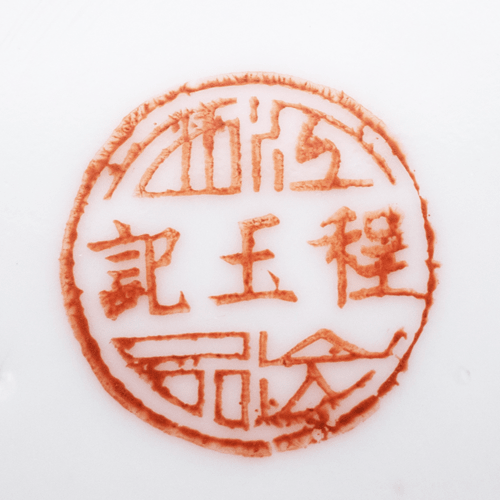
Modern Chinese porcelain mark on famille rose decorated plate that reads 江西 程玉記 出品 ‘Jiangxi Cheng Yu Ji Chu Pin’ (Jiangxi, product of Cheng Yu Ji). Thera are many different variations of this type of stamped red circular marks known on later 20th century porcelain with different names in the middle row.
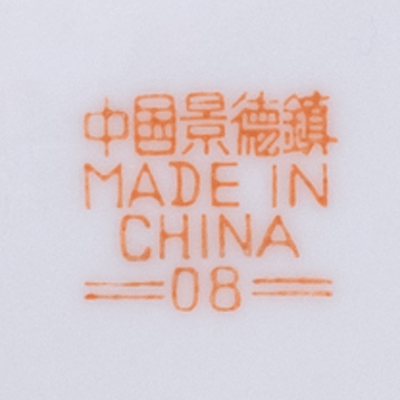
Stamped red Chinese mark on vintage porcelain that reads 中国景德镇 ‘Zhongguo Jingdezhen’ (China, Jingdezhen), MADE IN CHINA and with Jingdezhen factory number 08 at the bottom. Again, there are many variations of this mark with different factory numbers or letters.
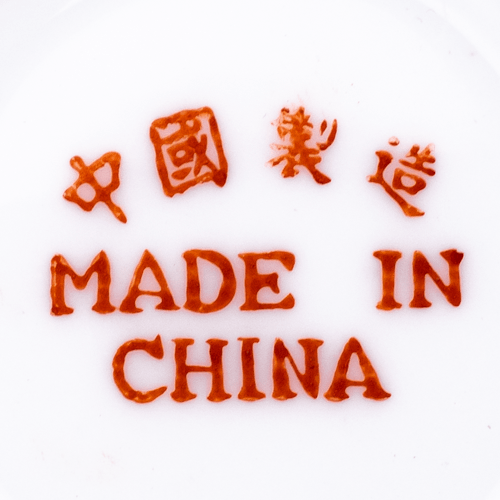
Another version of later 20th century stamped red porcelain mark that reads 中國製造 ‘Zhongguo Zhi Zao’ MADE IN CHINA
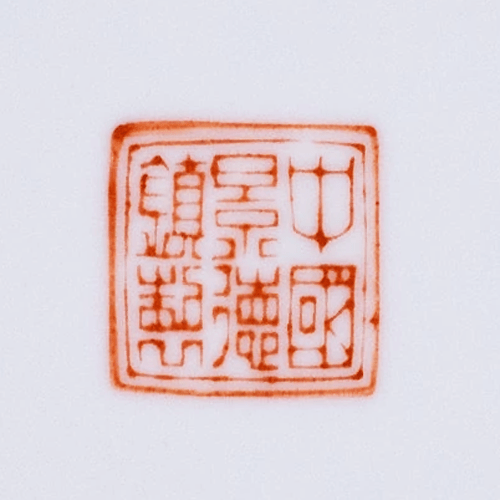
Iron red stamped mark in seal script that reads 中國景德镇製 ‘Zhongguo Jingdezhen Zhi’ (Made in Jingdezhen, China). Found on later 20th century Chinese porcelain.
瓷器和欧洲中国风格陶瓷上的伪中国瓷器标记
有时您可能会在欧洲过度装饰(“破坏”)的中国瓷器上以及一些欧洲瓷器和中国风格的陶瓷上看到毫无意义的中国痕迹。 这里只是这些仿中国标记的一些例子——它们通常是在釉上用铁红色珐琅制成的,但有时也可以用釉下蓝色制成,例如梅森铁石的一些例子。
